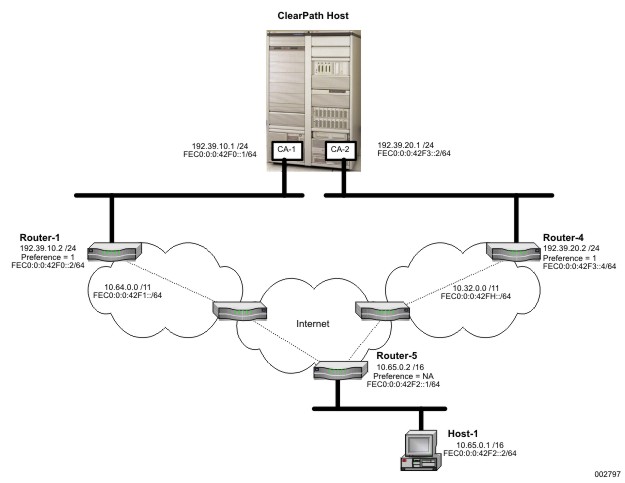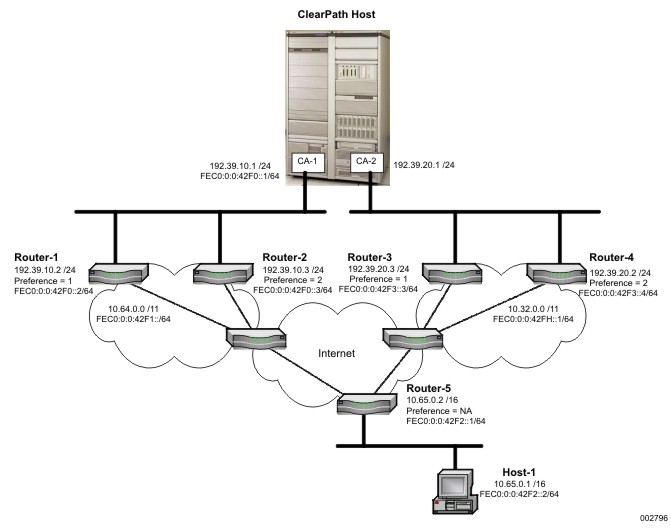Routing in both IPv4 and IPv6 networks enables you to configure a system default route that is selected if a specific route (direct or indirect) is not available. The system default route is system-wide and used regardless of actual destination reachability. It is assumed that the system default route provides access to the entire set of desired destinations. This might not always be true, preventing some destinations from being reached.
Though multiple system default routes can be configured, there is only one system default route in use at any one time. All of the other system defaults configured are backup routes, used if the current system default is detected to be offline by the Dead Gateway Protocol (IPv4 networks) or by the Neighbor Discovery Protocol (IPv6 networks). Under large dialog loads, this places a heavy routing burden on a single system default router when the server host might actually be multihomed to multiple networks, each being able to reach the desired destination.
By using VLSM and CIDR support, assigned default routes can be defined to address any remote destination from within a local aggregation rather than configuring multiple masked indirect routes. Multiple Default Routes Topology demonstrates the use of multiple assigned default routes.
In Multiple Default Routes Topology, both Router-1 and Router-4 have been configured as an assigned default route. Each has been assigned to a local address aggregation by providing a network-prefix when configured. Both of these default routes have physical access to all destinations within the Internet but reside within different address aggregations; Router-1 belongs to 192.39.10.0 /24 and Router-4 belongs to 192.39.20.0 /24 (assuming IPv4 networks in this example). Conversely, Host-1 can access either CA-1 via Router-1 or CA-2 via Router-4.
Incoming dialogs from Host-1 supply the desired destination address, either CA-1 or CA‑2. Based on the dialog's destination address (a local IP address of the ClearPath host), the routing algorithm locates an assigned default route belonging to the same address aggregation as the destination of the dialog.
Assume that Host-1 is establishing a dialog with CA-1, having an IP address of 192.39.10.1. When the ClearPath host attempts to locate the return route and there are no “direct” or “indirect” routes defined for Host-1, the assigned default route, Router‑1, belonging to the same address aggregation as CA-1, is used.
Outgoing dialogs are handled differently. If the IP address of the local socket is specified, the routing algorithm behaves similarly to incoming dialogs; however, if the IP address of the local socket is not specified, the routing algorithm must choose a network interface and assign the address. If there are no direct or indirect routes defined, the current configured “system” default route is used and the network interface is chosen based on that selected system default route. Therefore, configure system default routes carefully, ensuring that each default route has access to all desired destinations.
Since multiple assigned default routes can be configured, more than one route can be configured and assigned to the same address aggregation as shown in Multiple Parallel Default Route Topology.
Multiple Parallel Default Route Topology is configured to provide a backup route for each local aggregation. As with configuring indirect routes, this is accomplished through the assignment of a preference value producing, "primary" and "alternate" assigned default routes. Only the primary assigned default routes will be selected unless a router failure has been detected at which time all dialogs will be routed through the alternate router. Note that as with system default routes, no more than one assigned default route can be defined with the same preference value.



